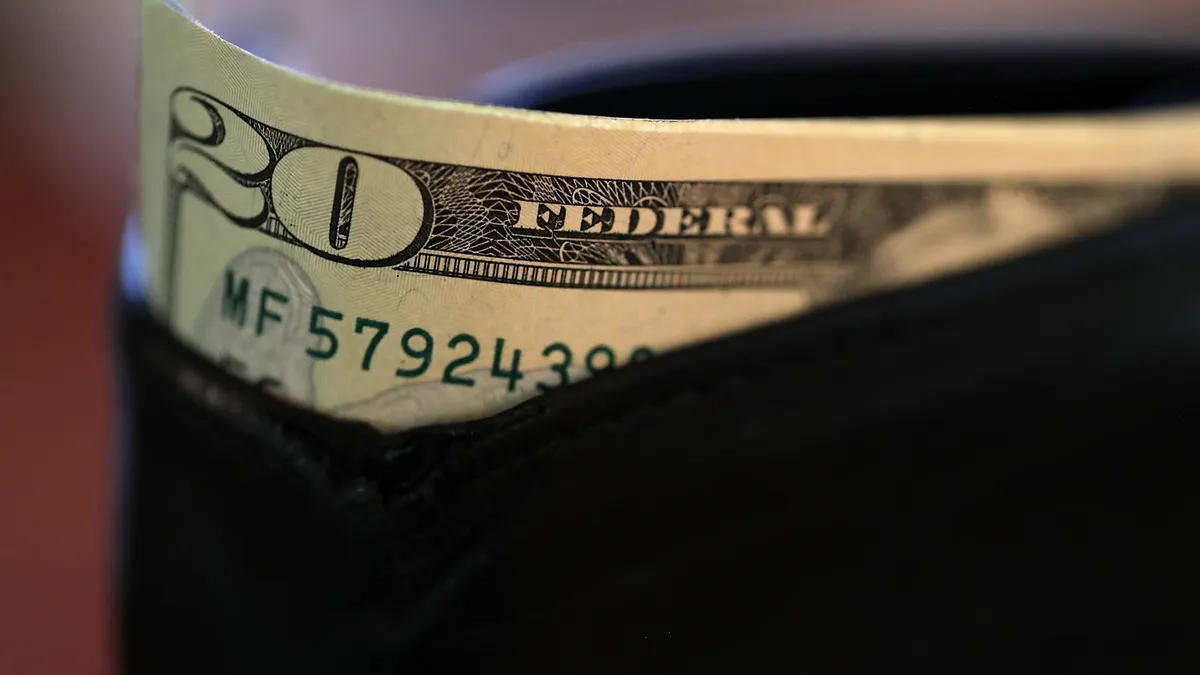Dive Brief:
- A rising share of student loan borrowers are having difficulty paying back their other debts, and the issue could become more severe once a pause on federal student loan payments is lifted.
- That’s according to a Wednesday analysis from the Consumer Financial Protection Bureau. It found that 7.1% of student loan borrowers not in default when the pandemic began were having trouble paying their other debts as of September, up from 6.2% of borrowers when the health crisis started.
- Borrowers who have defaulted on their student loans are also having more difficulty: 1 in 8 of those borrowers were delinquent on other debt as of September, compared to just 1 in 10 when the pandemic began.
Dive Insight:
The report’s authors argue that Biden’s loan forgiveness policy could help ease this situation, as a large chunk of struggling borrowers could have all or a significant portion of their student loan balances wiped away.
Biden’s loan forgiveness policy would clear up to $10,000 of student loan debt for individuals who make $125,000 or less annually. Those who received Pell Grants would be eligible for up to $20,000 in forgiveness. Although the administration opened applications for debt forgiveness last month, a federal appeals court temporarily blocked the plan while it hears a legal challenge from six conservative states.
The report’s authors couldn’t determine which borrowers in its analysis would meet the plan’s eligibility criteria because they didn't have data on their incomes or whether they received Pell Grants. But they noted that 25% of borrowers who were delinquent on non-student loan debt carried student loan balances of less than $10,000. Another 19% of this group had student loan balances between $10,000 and $20,000.
“Many of the student loan borrowers who are currently struggling with repayment on other debts might no longer have student loan debt to repay when the payment suspension ends,” they wrote.
Federal student loan payments and interest accrual have been suspended since the pandemic erupted in March 2020. In August, the Biden administration continued the freeze through the end of the year but told borrowers this was the last extension.
The CFPB researchers also found that a larger share of student loan borrowers were facing higher monthly payments on their other debts than before the pandemic.
As of February 2022, 39% of borrowers had seen their monthly debt payments — excluding student loans and mortgages — increase by at least 10% since the pandemic began. Just seven months later, that share of borrowers had increased to 46%.
Widespread debt relief could help at-risk borrowers make their student loan payments when the pause lifts, the authors wrote. Their argument echoes the Biden administration’s legal defense for its loan forgiveness plan.
U.S. Department of Education officials have maintained the pandemic heightened borrowers’ delinquency risk. In court documents, the Biden administration estimated borrowers’ student loan monthly payments could drop 38% under the debt relief plan, contending this reduction could help them make their payments on time.















